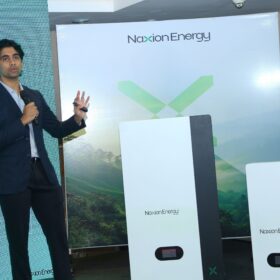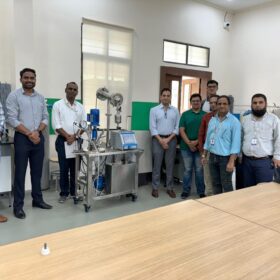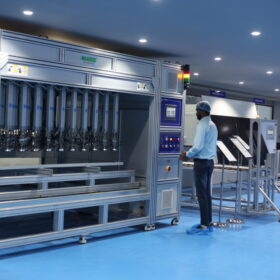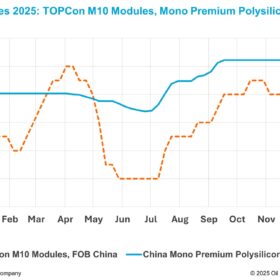For much of modern business history, supply chains were judged almost entirely on speed, cost efficiency, and reliability. Those measures still matter, but they no longer tell the whole story. In boardrooms and across industries, supply chains are now recognised as central to climate strategy, investor confidence, and regulatory compliance. The challenge is not just knowing where the emissions are, but being able to act on that knowledge quickly and with precision. Regulations are tightening. Stakeholders are asking harder questions. Market access itself is increasingly linked to responsible sourcing. Meeting this moment requires more than spreadsheets and annual audits. It calls for real-time visibility, the ability to see risk before it becomes disruption, and the discipline to ensure action is consistent with long-term commitments. This is where Artificial Intelligence (AI) and Environmental, Social, and Governance (ESG) frameworks intersect, not as separate tools but as a combined approach that can reshape how supply chains are run.
From a Compliance Exercise to a Strategic Lever
In many industries, sustainability reporting has moved from being a voluntary statement of intent to a contractual obligation. The EU’s Corporate Sustainability Reporting Directive and India’s Business Responsibility and Sustainability Reporting framework are embedding Scope 3 disclosures into corporate governance. Global buyers now evaluate suppliers on their ESG performance as much as their delivery record. In this context, falling short is not simply a matter of reputational damage, it can mean being excluded from bids entirely.
Forward-looking organisations see this shift as an opportunity to strengthen their position rather than a burden to carry. That requires more than a snapshot of current performance. It demands an understanding of the environmental and social profile of every tier in the supply chain, refreshed continuously. AI provides the speed and analytical depth to make that possible.
AI as the Intelligence Layer
Conventional reporting looks backwards. By the time the numbers are in, conditions have often changed. AI turns that lag into live insight by bringing together information from procurement systems, logistics partners, IoT-enabled equipment, and even climate models. The result is a view of the supply chain that is both comprehensive and current.
The real value lies in what happens next. AI can flag suppliers whose emissions profiles are rising, highlight potential compliance breaches, or test the impact of switching to lower-carbon materials. It can model the ripple effects of a port closure or forecast how extreme weather in one region might affect sourcing months later. This level of foresight allows decisions to be made before issues spill over into cost, delivery, or brand damage.
ESG as the Framework for Action
Data without direction rarely changes outcomes. This is where ESG frameworks provide the discipline and structure to ensure AI-driven insights are acted upon. When intelligence is fed into ESG policies, it influences procurement contracts, supplier scorecards, and boardroom discussions.
For example, a contract might include measurable emissions targets verified through AI monitoring. Progress against those targets can be reviewed at the highest levels of the organisation, ensuring accountability. Over time, this creates a continuous loop where AI informs governance, and governance ensures that insights are embedded in everyday decision-making.
From Reacting to Anticipating
The shift from reactive management to predictive resilience is the most transformative change AI and ESG bring together. Predictive analytics can warn of supply interruptions well ahead of time, a critical component at risk due to flooding in a sourcing region or a geopolitical change likely to affect a trade route. ESG principles ensure that any contingency plan, whether finding alternative suppliers or changing production schedules, upholds the same environmental and social standards.
This combination not only protects supply continuity but also reinforces trust. In markets where transparency is becoming a competitive advantage, being able to anticipate disruption and respond in line with stated values sets true leaders apart.
The Road Ahead
The integration of AI and ESG is redefining what supply chain management can be. AI brings the speed, scale, and foresight to manage complexity with confidence. ESG ensures that capability is channelled into transparent, accountable, and sustainable outcomes.
In the years ahead, the companies that will be most successful are the ones that incorporate intelligence and governance within the backbone of their supply chains. These companies will focus on anticipation, adaptation, and active shaping of change as opposed to waiting for change to come. They will take the lead in commercial success and climate goals simultaneously. In a climate-conscious economy, leadership will be judged by the amount of promises kept, and the credibility and consistency that comes with them.
The views and opinions expressed in this article are the author’s own, and do not necessarily reflect those held by pv magazine.
This content is protected by copyright and may not be reused. If you want to cooperate with us and would like to reuse some of our content, please contact: editors@pv-magazine.com.








By submitting this form you agree to pv magazine using your data for the purposes of publishing your comment.
Your personal data will only be disclosed or otherwise transmitted to third parties for the purposes of spam filtering or if this is necessary for technical maintenance of the website. Any other transfer to third parties will not take place unless this is justified on the basis of applicable data protection regulations or if pv magazine is legally obliged to do so.
You may revoke this consent at any time with effect for the future, in which case your personal data will be deleted immediately. Otherwise, your data will be deleted if pv magazine has processed your request or the purpose of data storage is fulfilled.
Further information on data privacy can be found in our Data Protection Policy.